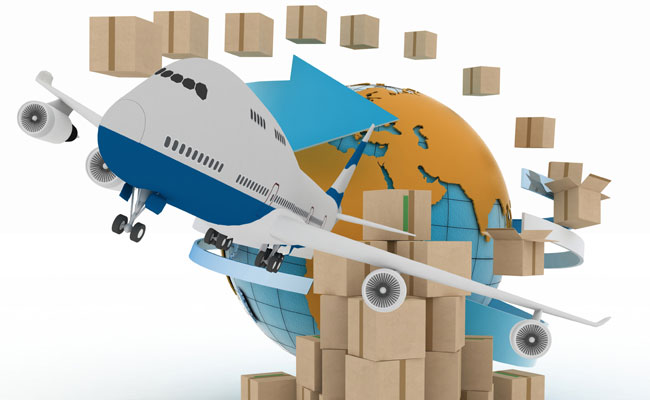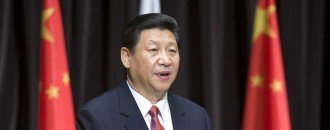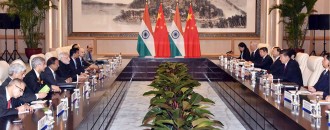
"Complete, break down of stable Exim policies causing huge trade imbalances"
Sisir Pradhan | The Dollar Business  The Dollar Business (TDB): In the last decade or so, globally many issues like changing economic scenario, aviation security, climate change, rising fuel cost etc. have made things difficult for the aviation sector. How have all these affected the performance, profitability and operation of civil aviation and cargo sector in India? Keshav Tanna (KT): I am unable to comment on the last decade, but surely the last 3 years have been perhaps the toughest as far as international freight goes for the Indian airfreight industry. Complete, break down of stable government Exim policies causing huge trade imbalances, resulting in airlines shying away from the Indian market and in fact pulling out capacities. Volatile and huge changes in the exchange rates also made the industry nervous in terms of pricing of aviation turbine fuel (ATF). TDB: Following the rise of China as a major manufacturing hub in the global supply chain network, a lot of outward traffic has been noticed from this region. Moreover, post-globalisation countries like China, India, South Africa, Russia and Brazil have emerged strongly as new consumer economies. How much will it affect/influence the global air cargo sector?
The Dollar Business (TDB): In the last decade or so, globally many issues like changing economic scenario, aviation security, climate change, rising fuel cost etc. have made things difficult for the aviation sector. How have all these affected the performance, profitability and operation of civil aviation and cargo sector in India? Keshav Tanna (KT): I am unable to comment on the last decade, but surely the last 3 years have been perhaps the toughest as far as international freight goes for the Indian airfreight industry. Complete, break down of stable government Exim policies causing huge trade imbalances, resulting in airlines shying away from the Indian market and in fact pulling out capacities. Volatile and huge changes in the exchange rates also made the industry nervous in terms of pricing of aviation turbine fuel (ATF). TDB: Following the rise of China as a major manufacturing hub in the global supply chain network, a lot of outward traffic has been noticed from this region. Moreover, post-globalisation countries like China, India, South Africa, Russia and Brazil have emerged strongly as new consumer economies. How much will it affect/influence the global air cargo sector?
 Keshav Tanna, Vice President, FIATA, Switzerland
Keshav Tanna, Vice President, FIATA, SwitzerlandKT: Brazil, Russia, China and South Africa together represent 40% of the world’s population and 25% of the global gross domestic product (GDP). Total trade among the countries is $6.14 trillion, or nearly 17% of the world’s total. These are the three major reasons these countries including India formed BRICS, an association to promote cooperation among the five emerging economies. Another major reason has been to oppose the US hegemony and to find a way to challenge the global financial dominance of America and its ruling lenders: the International Monetary Fund and the World Bank. As each country acts to maximize its own utility, the emerging economies of the BRICS nation will create a parallel international financial system ultimately challenging the hegemony of the current western-dominated system. The idea is to cut down transaction costs for companies, improve productivity, efficiency and enhance competitiveness. By providing air freight station (AFS) closer to production/consumption hubs, the air cargo industry would get the required support and boost. TDB: How do you see general regulatory environment in India for civil aviation sector? India’s bureaucratic and customs related delays are legendary. Do you think these are common among developing economies or is it unique to India? KT: I do not think these are synonymous to developing economies. They are more legacy related issues, which need to be changed on a fast track basis if we have to prosper. Delays are related more to inadequate infrastructure, which unfortunately has been India’s pit fall not only in the aviation sector, but in all spheres of economy in general. There is nothing wrong in having a regulatory environment, particularly since the aviation sector is a very sensitive one, but the processes have to be transparent; this is where the problems are faced, thereby leading to undue delays. TDB: How technology can play a part for more seamless connectivity and improving the performance of air cargo sector? Do you think India which is one of the largest software developers in the world, has done enough to use its IT capability for the growth of aviation sector? KT: Technology, particularly in our industry can play a vital role in immediately reducing lead times. Our neighbours like Singapore and Hong Kong, thrive on technology driven processes. Unfortunately, in India technology has gone in reverse mode in certain sectors. In Customs we still continue to give umpteen paper documents for Exim shipments. Similarly, some of the airlines have moved to e-documentation, but we still continue to give umpteen photocopy documents at each stage thereby defeating the entire purpose of EDI (Electronic Data Interchange). TDB: How would you rate evolution of cargo sector vis-à-vis passenger sector in India compared to global benchmarks? KT: Somehow we in the cargo sector always feel that we get step motherly treatment compared to our passenger colleagues. This in itself, should answer your question in terms of comparison between the two sectors. There is no doubt that the aviation industry is more passengers centric and cargo gets a back seat. This however, would be unfair to certain airlines who have understood that cargo is an integral part of their revenue streams and have in fact completely separated their passenger and cargo divisions in terms of profitability. TDB: How organised are Indian air cargo sector, in terms of reliability, speed, global network and reverse logistics? KT: In terms of forwarder capability Indian freight forwarders are as or perhaps even more organised than any global forwarder. Reliability and speed depend largely on the infrastructure at his disposal, which unfortunately in our country are rather poor. TDB: Please tell us something about the financial health of airlines sector in India and how much the cargo segment is adding to the revenue? KT: This would be best answered by airline personnel, but if general market perceptions are to be believed then, the airlines are going through difficult times. Operating costs, ATF prices, security etc. have been huge challenges for the airlines and in general hit their bottom line heavily. It is for this reason that one sees quite a few airline mergers in terms of Air France / KLM / Martin Air; Lufthansa / Swiss / Austrian: Jet / Etihad to name a few major ones. But then this will continue to be a challenging Industry and all industry partners are facing similar adversities in this field. TDB: Do you see any future possibility of air cargo changing its role of premium service to a more mainstay of domestic and global supply chain? Is there any chance of air cargo being accepted to move cargo domestically in India, if yes/no why? KT: I think the domestic air cargo market is doing quite well anyway; in fact I think the domestic numbers are rising more than the international air cargo volumes in terms of percentage. TDB: How has been capacity utilisation at Indian airports and how prepared are they to handle future growth? Is there any demand-supply mismatch? KT: As I said earlier, infrastructure has been and continues to be our major constraint. Even where there has been growth in this sector the process of implementation has been so long and delayed, that ultimately by the time the infrastructure is put in place the growth has overtaken it, thereby putting even the new facilities under strain. India shining growth story would have been entirely different has infrastructure kept pace with growth in the golden era – guess we missed the bus due to lack of foresight. TDB: In the entire supply chain of merchandise trade across the globe, what is the share and role of freight forwarding by air. How is the scenario in India? Will air cargo be ever a real competition to other modes of transports, like road, rail and water, for domestic movement of cargo? KT: In volume terms air cargo forms perhaps 1% of global freight transportation. Ocean freight is far more dominant; however, in value terms air cargo is as high as 35%. This in itself tells us the importance of air freight and why it is so essential to the global Exim trade. The commodity segments are primarily different and hence none of these modes can be disregarded at the cost of another. TDB: As Indian companies go global, how air cargo sector could help them in gaining supply chain competitiveness? KT: When global companies started entering India a decade ago we took them lightly. Today they are among the top 10 freight forwarding companies in India. However, these 10 years have taught the Indian forwarder a lot. They have become more competitive, efficient and have started offering more services in terms of third-party logistics (3PL) and Fourth Party Logistics (4PL) to their customers. Supply Chain, Inventory Management, Just In Time concepts etc. were never heard of locally, till the Indian air cargo market turned global. It is heartening to note, that having learnt from these international players, some Indian players have bought out stakes in global companies thereby proving what we are capable of. TDB: Recent trend among aircraft manufacturers has been to build bigger and wide bodied aircrafts. What kind of cost benefit does these aircrafts translate to users? How do you see infrastructure at Indian airports to handle various types of cargo and cargo planes of different sizes, particularly the wide bodied super transporters? KT: Wide body aircrafts are definitely the future as they can carry more cargo. Also the newer aircrafts are more fuel efficient thereby reducing the operational costs. The airlines have understood this and are upgrading their fleets continuously. In terms of translation to users it would mean better freight rates and added capacities in the market. I can only hope that the Indian airports this time on keep pace with the changing world around us and ensure that we are able to cater to these aircrafts thereby achieving the ultimate benefits which they are meant for. TDB: The way passenger traffic has grown in the country (India), the same has not been registered with the cargo sector. What do you think are the major deterrents for growth of air cargo sector in the country? KT: As mentioned earlier, cargo has always got step motherly treatment compared to the passenger side of our business. A classic example being the new T2 Terminal at Mumbai for the passenger side, vis-à-vis the old 1974 facility of an old aircraft hangar which we still continue to operate out of at the air cargo complex Mumbai. What kind of growth can be expected – in fact cargo moves to different airports due to delays, mishandling and lack of accountability.
June 20, 2015 | 04:18 pm IST.






 to success.
to success.